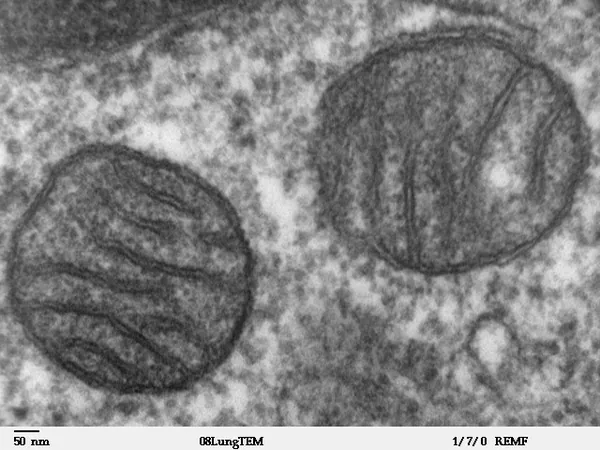
Groundbreaking Study Uncovers Mitochondria’s Dual Role During Cancer Stress
2024-11-06
Author: Arjun
In high school biology classes, students learn that mitochondria are often referred to as the “power plants” of cells, converting nutrients into ATP—the primary energy currency for cellular functions. However, emerging research reveals that the role of mitochondria extends far beyond energy production; they also contribute crucial building blocks necessary for cell growth and replication.
While the traditional narrative suggests that mitochondria primarily focus on energy creation, scientists have discovered a more nuanced understanding: these organelles can switch between two distinct functions depending on the cellular environment. The latest research conducted by Dr. Craig Thompson and his team at Memorial Sloan Kettering Cancer Center (MSK) delves into how mitochondria adapt their activities under stressful conditions, particularly in the context of cancer.
The Stressful Decision-Making of Cells
Under regular circumstances, when nutrients are abundant, cells can easily allocate resources to produce both ATP and the necessary materials to form DNA and proteins. However, the scenario changes dramatically in stressful situations—like when a tissue is damaged, and both energy and building blocks are in high demand. The question arises: how do cells prioritize under such pressure?
Dr. Thompson’s innovative study answers this by demonstrating that under stress, mitochondria undergo a remarkable transformation, evolving into specialized subpopulations. This division of labor allows one group to focus on ATP production while another concentrates on synthesizing cellular components. This adaptation enables cells to efficiently meet their conflicting demands even in challenging conditions.
The Mitochondrial Mechanism
The research reveals that the enzyme P5CS plays a pivotal role in guiding this mitochondrial division of labor. When nutrients are scarce, P5CS connects into filamentous structures in one subpopulation while remaining absent in another. This segregation is critical: the mitochondria that generate ATP have a typical architecture, while the P5CS-rich mitochondria adapt a different form, streamlining their function for building cellular structures.
Additionally, this study enlightens a long-held theory about mitochondrial dynamics: namely, that the processes of mitochondrial fusion and fission—where mitochondria merge and physically divide—are not just maintenance functions but are also essential for functional specialization among mitochondria.
Cancer and Mitochondrial Adaptation
What makes this research particularly tantalizing is its potential implications for understanding cancer biology. Cancer cells thrive in low-nutrient environments where most normal cells would perish. Dr. Thompson’s research observed these distinct mitochondrial populations within tumors from pancreatic cancer patients, suggesting that their formation may be a driving factor in cancer progression.
This discovery opens the door to new avenues of research. Could these mitochondrial adaptations be the key to why cancer cells metastasize more effectively? Are they indicators of cellular stress that could pave the way for therapeutic interventions? Dr. Thompson’s team plans to explore these avenues further, hoping to gain insights that could revolutionize cancer treatment.
A Glimpse into Aging
Interestingly, these findings could also tie into the science of aging. Understanding how mitochondria adapt to stress may illuminate mechanisms of tissue repair and regenerative medicine. Dr. Thompson speculates that observing mitochondrial changes could serve as a biomarker for cellular distress, a potential breakthrough in aging research.
This groundbreaking study not only enhances our understanding of cellular function during stress but also raises important questions about the intricate balance of energy and material production in cells. As we unravel the complexities of mitochondria, we edge closer to transformative medical advancements. Stay tuned for more revelations that could change everything we thought we knew about cancer and cellular health!



 Brasil (PT)
Brasil (PT)
 Canada (EN)
Canada (EN)
 Chile (ES)
Chile (ES)
 España (ES)
España (ES)
 France (FR)
France (FR)
 Hong Kong (EN)
Hong Kong (EN)
 Italia (IT)
Italia (IT)
 日本 (JA)
日本 (JA)
 Magyarország (HU)
Magyarország (HU)
 Norge (NO)
Norge (NO)
 Polska (PL)
Polska (PL)
 Schweiz (DE)
Schweiz (DE)
 Singapore (EN)
Singapore (EN)
 Sverige (SV)
Sverige (SV)
 Suomi (FI)
Suomi (FI)
 Türkiye (TR)
Türkiye (TR)